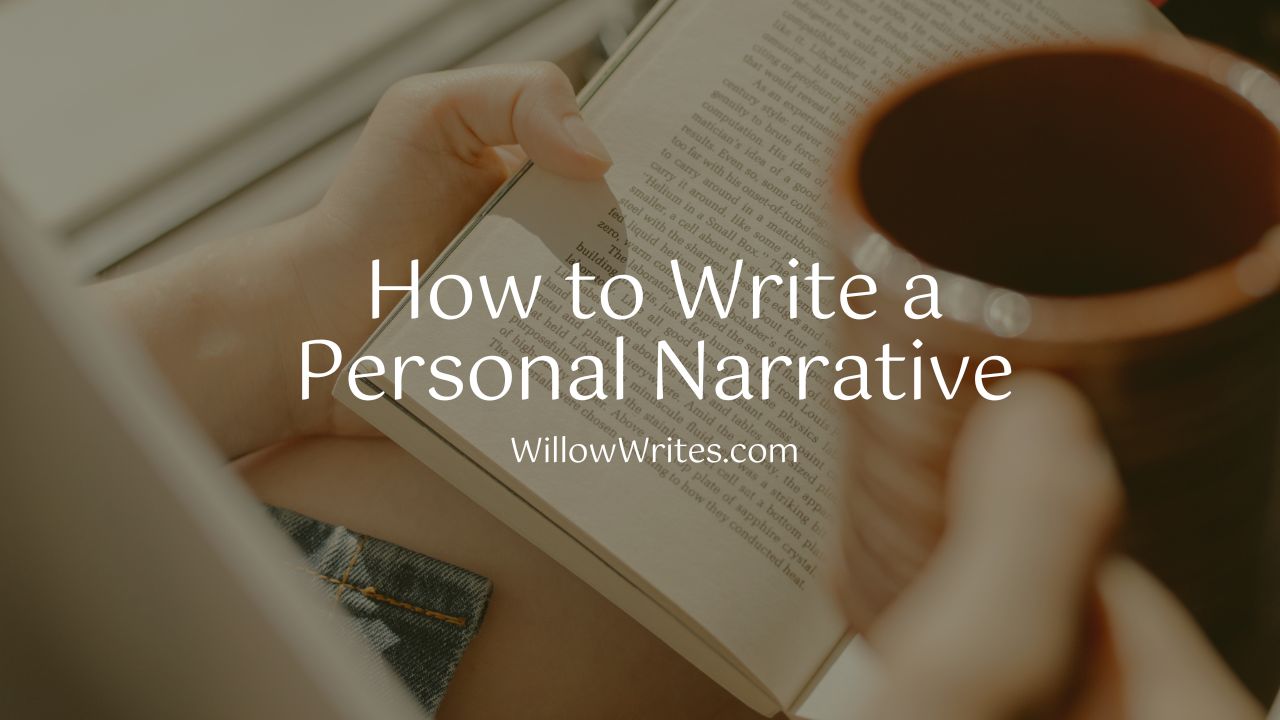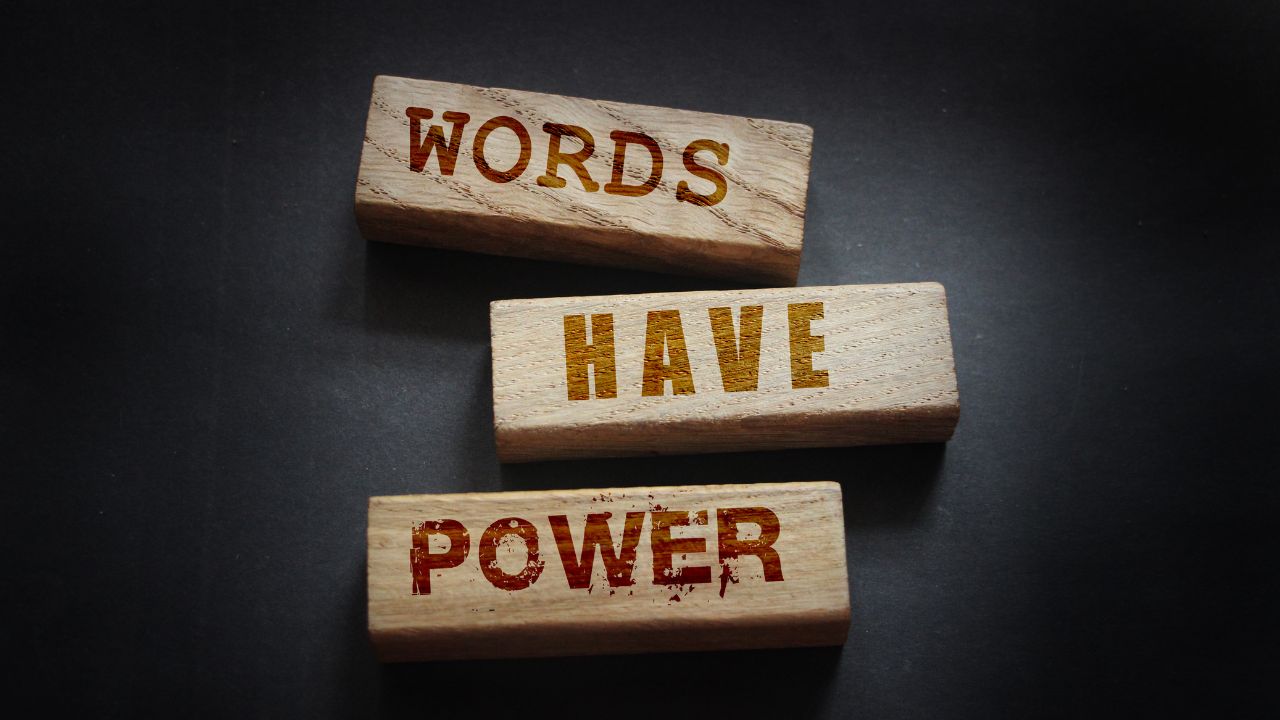Do you hate writing personal narratives? So did I, until I learned how to do it correctly. This blog post will explain how to write a personal narrative by exploring how to craft engaging personal narratives, drawing on your own experiences and emotions. So pull up a chair, get comfortable, and let’s get started!
What is a Personal Narrative?
A personal narrative is a story about a significant event in your life. It can be funny, heartwarming, painful, or all of the above. The key is that it needs to be meaningful to you somehow.
Think back to the last personal narrative you wrote. Chances are, you started with a scene: maybe you were climbing a tree on a hot summer day or looking out at the snow-capped mountains from your window on a frigid winter night.
Whatever the scene, it was likely something that stirred up strong emotions within you and compelled you to write about it. And that’s the key to writing a good personal narrative: start with a scene that will hook your readers and make them feel something.
A personal narrative essay is usually based on a single event that significantly impacted the writer. It could be something as small as a childhood memory or as momentous as a life-changing event.
The important thing is that the event should have affected you and that you can share what happened clearly and interestingly.
Why Write a Personal Narrative?
There are many reasons why you might want to write a personal narrative. Maybe you want to share a funny story about something that happened to you, or maybe you want to write about a time when you faced a challenge and overcame it.
Personal narratives can also be used to communicate important lessons that you’ve learned in life. By sharing your experiences, you can help others learn from your mistakes or inspire them to face their own challenges.
Whatever your reason for writing a personal narrative, remember that your goal is to connect with your reader and make them feel something. With that in mind, let’s move on to some tips for how to write a personal narrative
Features of a Personal Narrative
When writing a personal narrative, it’s important to keep the following features in mind:
First-person point of view: Personal narratives are usually written in first person, meaning they’re written from your perspective. This helps create a more intimate connection between you and the reader.
Dialog: Dialog, or conversation, can be a great way to add interest to a personal narrative. It can also help to further develop the characters in your story.
Vivid descriptions: Personal narratives are all about painting a picture for the reader. Be sure to use descriptive language to bring your story to life.
Emotional appeal: As we mentioned before, personal narratives should stir up strong emotions in the reader. Whether you’re writing about a funny moment or a life-changing event, your goal is to connect with your reader on an emotional level.
Now that we’ve gone over some of the key features of a personal narrative, let’s move on to the next step: brainstorming ideas for your narrative.
Brainstorming Ideas for Your Personal Narrative
One of the best ways to come up with ideas for a personal narrative is to brainstorm a list of potential topics. To get you started, here are some prompts that you can use to spark your creativity:
- A time when you faced a challenge
- An experience that changed your life
- A memory that makes you laugh or cry
- A place that’s special to you
- A relationship that’s significant to you
- A hobby or interest you’re passionate about
- Something you’re afraid of
- A time when you felt embarrassed or ashamed
- A moment when you were proud of yourself
- A time when you made a mistake
Once you’ve brainstormed a list of potential topics, it’s time to choose the one that you’re going to write about.
To do that, ask yourself the following questions:
What’s the most memorable experience I want to write about?
What’s the best way to tell this story?
What details can I include to make this story more interesting?
What lessons have I learned from this experience?
By asking yourself these questions, you should be able to narrow down your list of potential topics to the one that you’re going to write about.
Now that we’ve gone over how to brainstorm and choose a topic for your personal narrative let’s move on to the next step: creating an outline.
Creating an Outline for Your Personal Narrative
Once you’ve chosen your topic, it’s time to start planning your story. The best way to do that is to create an outline.
Here’s a basic outline for a personal narrative:
Introduction:
Start with a hook or an interesting opening that will grab the reader’s attention. Then, give some background information about your topic. Finally, explain what you’re going to write about in your story.
Body paragraphs:
In the body paragraphs of your narrative, you’ll need to include enough detail to bring your story to life and make it interesting for the reader. Be sure to include sensory details, dialogue, and other elements to help create a vivid picture for the reader.
Conclusion:
In the conclusion of your narrative, you’ll want to wrap up your story and leave the reader with a strong final impression. You can share the lessons you learned from your experience or explain how this experience has affected you. By creating an outline before you start writing, you’ll be able to organize your thoughts and ensure that your story flows smoothly.
Now that we’ve gone over how to create an outline for your personal narrative, let’s move on to the next step: writing your story.
How to Write a Personal Narrative: 9 Tips
Now that we’ve answered the question.”What is a personal narrative?” and discussed some reasons why you might want to write one, it’s time to get started! Here are nine tips for how to write a personal narrative that will resonate with your readers:
1. Start with a scene
As we mentioned, the best way to hook your reader is to start with a scene. This could be a specific event that you remember vividly, or it could be an ongoing experience you feel strongly about.
Whichever route you choose, set the scene by providing enough details for your reader to picture what’s going on. If you’re writing about a specific event, describe where it took place, the weather, who was there, and what you were doing.
If you’re writing about an ongoing experience, describe the setting in detail and provide some background information on why it’s significant to you.
2. Use strong verbs
Once you’ve set the scene, it’s time to move into the action. Use strong verbs to describe what’s happening and help your reader feel like they’re right there in the thick of things.
For example, instead of saying, “I was walking down the street,” you could say, “I strutted down the street.” The verb “strut” adds attitude and makes the scene more interesting to read.
Likewise, instead of saying, “I was scared,” you could say, “I quaked with fear.” This not only sounds more interesting, but it also provides insight into your emotional state at the time.
3. Use sensory details
In addition to using strong verbs, another way to make your readers feel like they’re in the scene is to use sensory details. Describe what you see, hear, smell, taste, and feel.
For example, if you’re writing about a time when you were very scared, you might say: “My heart pounded in my chest, and I felt like I was going to vomit.” Using these types of details, you can help your reader feel the same emotions you felt at the time.
4. Be honest
One of the most important things to remember when writing a personal narrative is, to be honest. Don’t try to make yourself look better or worse than you are – just write about what happened as truthfully as you can.
Being honest doesn’t mean you have to share everything – sometimes, it’s okay to leave out details that are too personal or hurtful. But in general, try to be as open and truthful as you can about your experiences.
5. Avoid cliches
When writing a personal narrative, it’s easy to fall into the trap of using cliches. For example, you might be tempted to say something like, “It was a dark and stormy night,” or “I had an epiphany.”
While there’s nothing wrong with using a well-known phrase every once in a while, try to avoid relying on them too much. Instead, challenge yourself to be creative and develop your own way of describing things.
6. Write in first person
When writing a personal narrative, it’s important to write in first person. This means using “I” statements, such as “I walked down the street.”
Writing in first person gives your story a more personal feel and allows your readers to connect with you more easily.
7. Use flashbacks sparingly
While flashbacks can be a great way to provide background information or add intrigue to your story, they should be used sparingly. If you use too many flashbacks, it can be confusing for your reader and make your story less cohesive.
If you do decide to use a flashback, make sure it’s relevant to the current story and that you provide enough context for your reader to understand what’s going on.
8. Write a strong ending
The ending of your personal narrative is just as important as the beginning. After all, this is the part of the story your reader will remember the most.
One way to end your story on a strong note is to tie everything back to the main theme or moral of the story. For example, if you’re writing about a time when you overcame a challenge, you might say, “I learned that I was stronger than I thought I was.”
Another way to create a strong ending is to leave your reader with a question or a cliffhanger. This will make them think about your story long after reading it.
9. Edit and revise
Once you’ve finished writing your personal narrative, editing and revising your work is important. This will help you fix any errors and ensure your story is as strong as it can be.
When editing, pay attention to spelling, grammar, and punctuation. You should also make sure your story flows smoothly and that there are no plot holes.
narrative, it’s important to edit and revise it. This will help you fix any errors and ensure your story is as strong as it can be.
Consider using Grammarly to help you with editing. This tool can catch grammar mistakes that you might miss. It’s also a great way to improve your writing skills in general.
When revising your story, ask yourself if there’s anything you can add or remove to make it better. Sometimes, less is more. Removing unnecessary details can make your story more impactful.
Finally, make sure the overall structure of your story makes sense. This includes the order of events and how each scene transitions into the next.
10. Publish your story
Once you’re happy with your story, it’s time to share it with the world. There are a few different ways you can do this.
If you want to keep your story private, you could simply save it on your computer or print it out. You could also bind it into a book or create a digital book using a program like Scrivener.
If you’re interested in sharing your story with a wider audience, you could submit it to a literary magazine or website. You could also self-publish your story as an ebook or print book.
No matter how you share your story, just remember that the most important thing is that you’re happy with it. Don’t worry about what other people think—just focus on creating a story you’re proud of.
Examples of Personal Narratives
Now that you know how to write a personal narrative, it’s time to see some examples. Reading examples of personal narratives can give you an idea of how to structure your story.
Below, you’ll find a few examples of personal narratives. The first compelling personal narrative is about a young woman’s experience with her father, and the second is about a young boy’s experience at summer camp.
Example 1: “My Father and I”
I was always close with my father, but it wasn’t until I went away to college that I realized how much he truly meant to me.
Growing up, my father was always busy with work. He was a successful lawyer, and his job often required him to travel. As a result, I didn’t see him as much as I would have liked.
When I left for college, I was nervous about being away from home. But my father assured me that everything would be okay. He told me he was always there for me, even if he couldn’t be there in person.
Throughout my first year of college, my father and I texted each other almost daily. He would ask me about my classes, and I would tell him about my friends and what I was doing. Even though we were so far apart, it was great to connect with him.
Then, one day, I got a call from my father. He sounded strange, and he told me he had some bad news. He had been diagnosed with cancer.
I was shocked. I didn’t know what to say. All I could think about was how much I wanted to be with him.
Fortunately, my father’s cancer was caught early, and he was able to receive treatment. I flew home as soon as possible and spent the next few months helping him recover.
Although it was difficult, it also brought my father and me closer together. We talked more than ever, and I could finally see how much he truly loved me.
Now, my father is healthy and happy. We still text each other almost daily, and I cherish our relationship more than ever.
Example 2: “My Summer at Camp”
When I was ten years old, I went to summer camp for the first time. I was nervous about being away from home, but I was also excited to meet new people and try new things.
As soon as I arrived at camp, I made a beeline for the nearest bunk. I had been assigned to a bunk with other ten-year-old girls and was eager to get to know them.
However, I soon realized that the other girls in my bunk didn’t want to be friends with me. They would exclude me from their games and conversations and often make fun of me.
I was hurt and confused. I didn’t understand why they didn’t like me.
One day, I decided to take a walk around camp. I had always loved exploring, hoping to find someplace new to play.
As I was walking, I heard laughter coming from a nearby cabin. I walked closer and saw a group of girls my age playing together. They looked like they were having so much fun.
I hesitated for a moment, unsure whether I should go over. But then I decided that there was nothing to lose. So, I walked up to the group of girls and asked if I could join them.
At first, they were hesitant. But after a few minutes, they welcomed me into the group. We spent the rest of the summer playing together and becoming close friends.
That experience taught me a lot about friendship and acceptance. I learned that being different is okay and that there’s always a place for you somewhere.
Now, whenever I see someone who looks like they’re feeling left out, I make sure to include them. Because I know what it feels like to be excluded, and I don’t want anyone to feel that way.
Personal narratives are a great way to connect with your reader. They allow you to share your experiences and lessons learned relatable and engagingly. Hopefully, these examples have inspired you to start writing your personal narrative.
Happy writing!
FAQ
What is a Personal Narrative?
A personal narrative is a story that recounts a writer’s personal experience.
What is the purpose of a Personal Narrative?
The purpose of a personal narrative is to share an experience that has affected the writer in some way. The goal is to connect with the reader and give them a glimpse into your life.
How long should a Personal Narrative be?
A personal narrative can be as short or as long as you want it to be. There is no set length for a personal narrative. However, it’s generally best to keep your story focused and concise.









